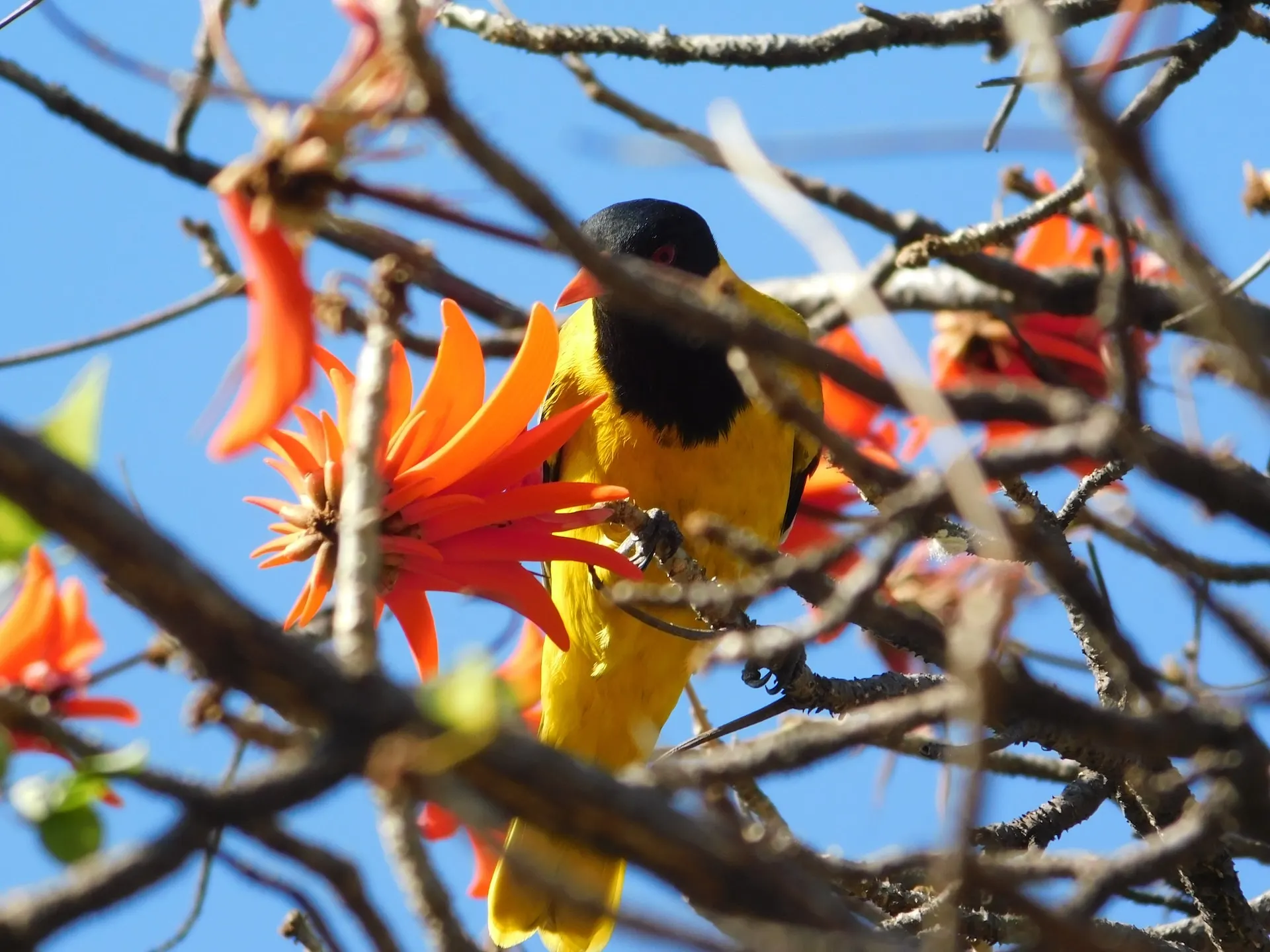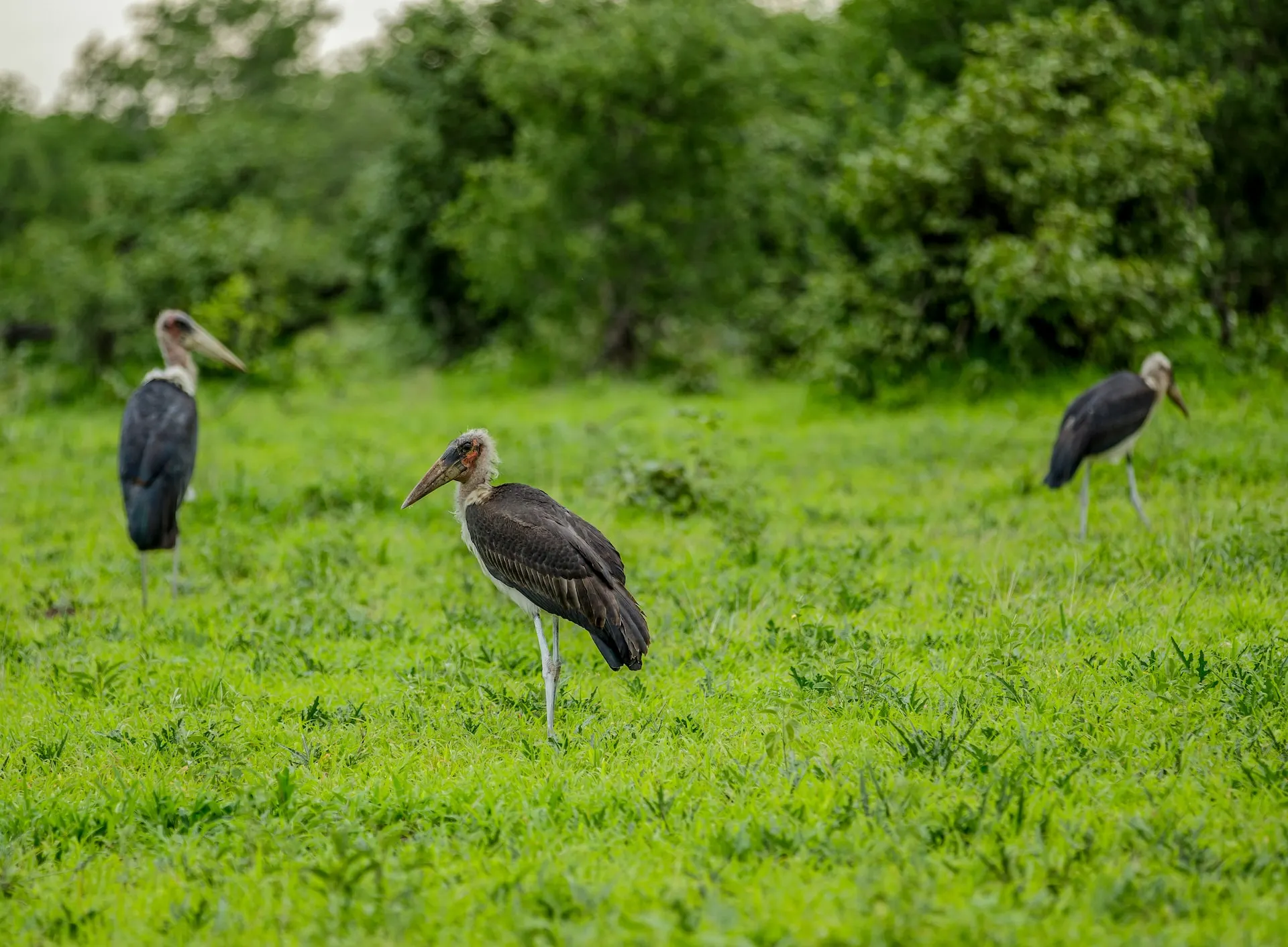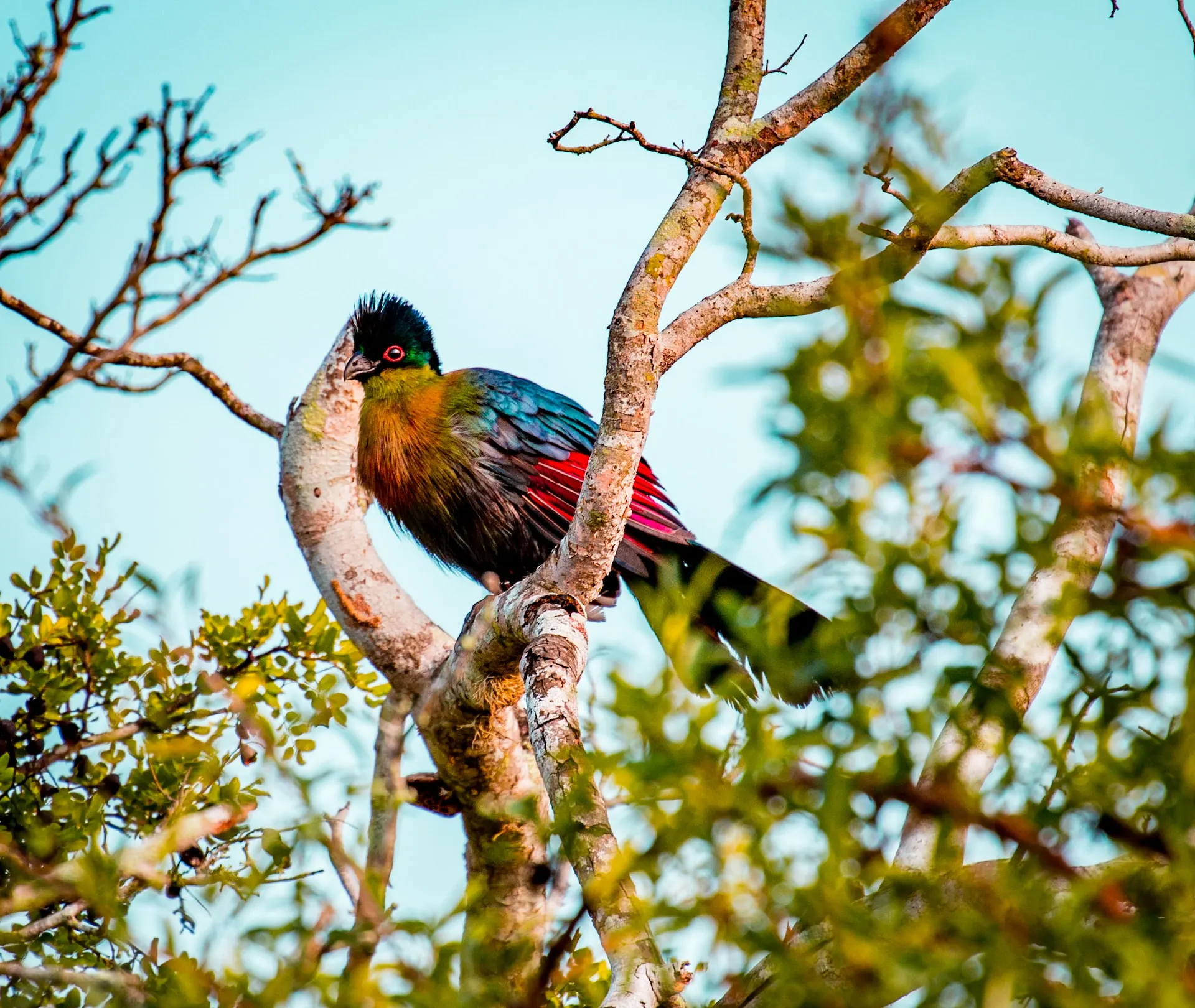Birding in Africa
Birds in Africa
Dig Deeper into Africa’s Birdlife
Africa is a birdwatcher’s paradise, home to over 2,600 bird species that is the highest diversity on any continent. Call it scanning the skies of the savannas, listening in the rainforests, or watching the shores of wetlands, birding in Africa offers unforgettable moments at every turn.
Where to Go Birding in Africa?
Savannas
Here, birds grow in open landscapes. Look for species like the African Fish Eagle, Lilac-breasted Roller, and Secretary Bird. Large raptors soar above while colourful birds add colours to the grasslands.
Rainforests
Dense and mysterious, African rainforests house Turacos, hornbills, parrots, and sunbirds. Their songs echo through the canopies, offering a challenge and a reward for birders.
Wetlands
Wetlands attract species like flamingos, shoebills, and herons. These watery ecosystems are crucial breeding and feeding grounds and perfect for spotting rare and migratory birds.
Complete List of Must-See Birds in Africa
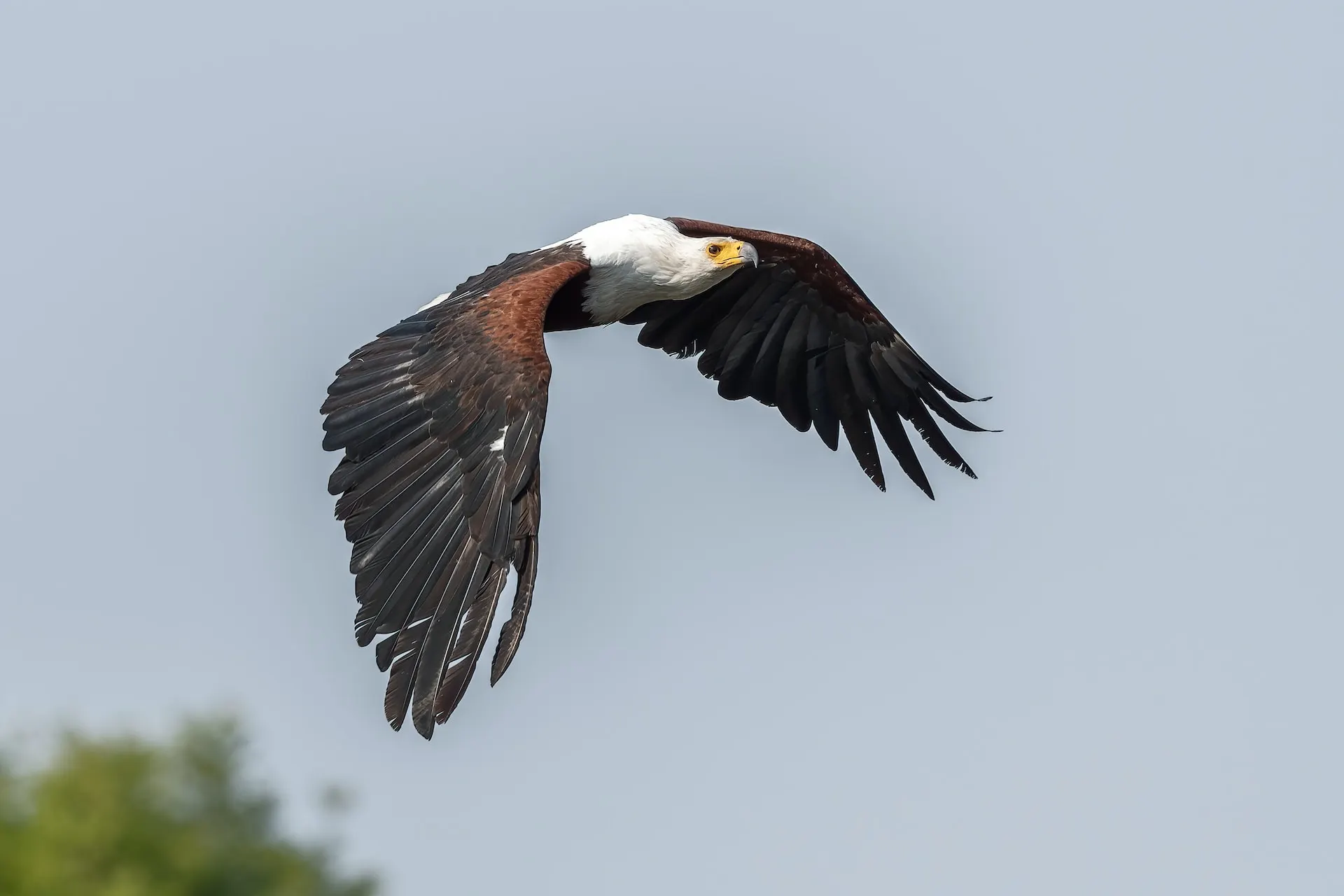
African Fish Eagle
Living in the lakes, rivers, and wetlands throughout sub-Saharan Africa. These birds have white head and chest and brown body with strong yellow beak. Its iconic, piercing call is often called the voice of Africa.
The bird is a skilled predator, swooping down to snatch fish from the water with powerful talons. Despite being fierce hunters, they sometimes steal prey from other birds like herons and kingfishers.
Flamingo
Their habitat is in the Alkaline lakes like Lake Nakuru and Lake Natron. These birds have long legs, curved neck with rich pink feathers. Lesser flamingos flock in the millions, turning lakes into beautiful pink landscapes. Their colour comes from carotenoid pigments in their algae-rich diet. Flamingos can stand on one leg for hours that is a mystery which the scientists believe can help with body heat regulation.
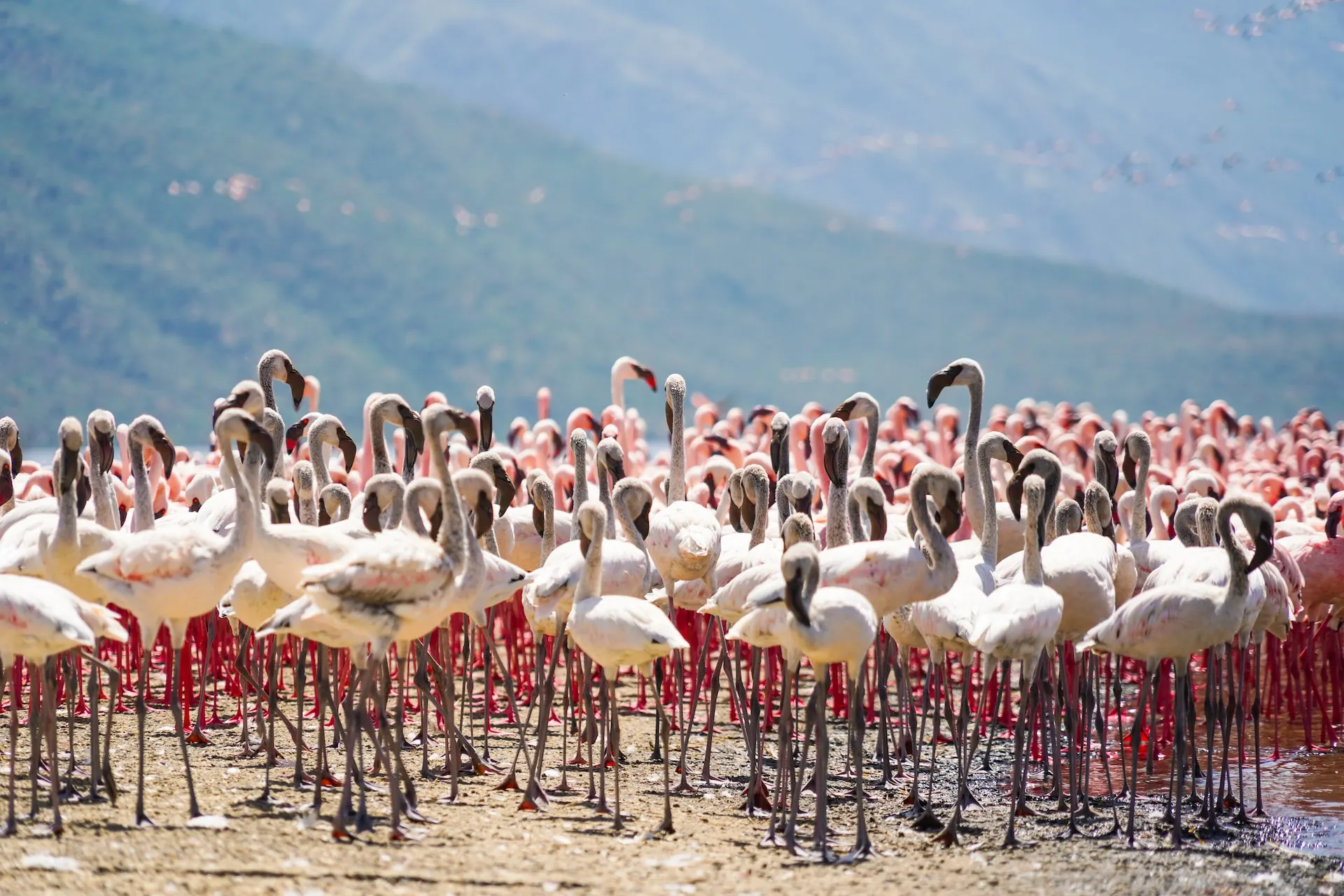
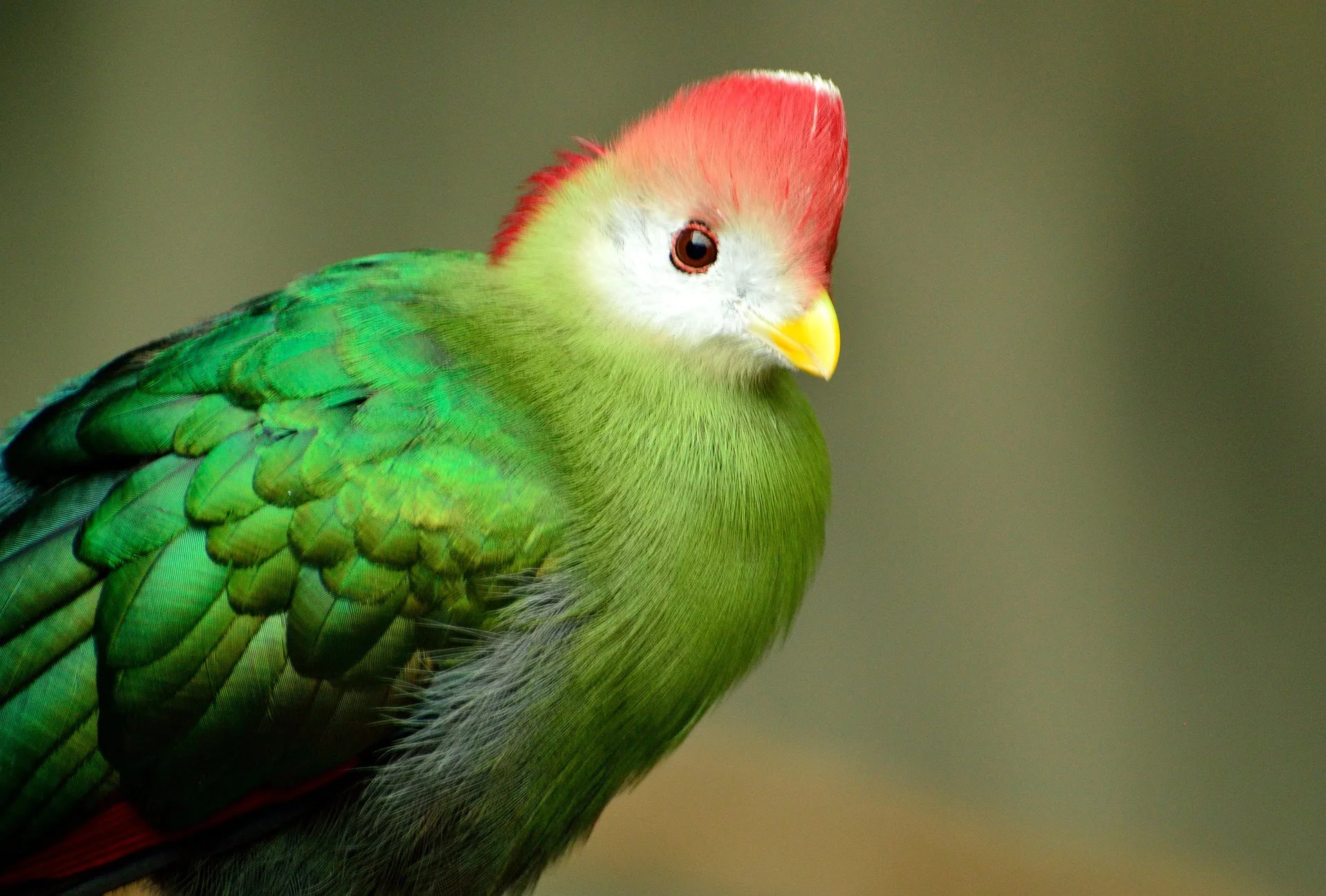
Turaco
These birds live in the forests of central and eastern Africa. They have brilliant green, red, and blue feathers with crested heads Their feathers contain a rare pigment called turacoverdin, unique to turacos. Their call sounds like a monkey’s bark that is sharp and echoing through the trees. Also, they are strong climbers as they use their clawed feet to leap from branch to branch.
Sunbird
Nesting in the woodlands, gardens, and forests across Africa. They are well known for their unique plumage, thin curved beaks and tiny size. Often mistaken for hummingbirds, sunbirds hover as they drink nectar from flowers. They are vital pollinators in African ecosystems. Males are brightly coloured to attract mates, while females are more camouflaged for nesting.

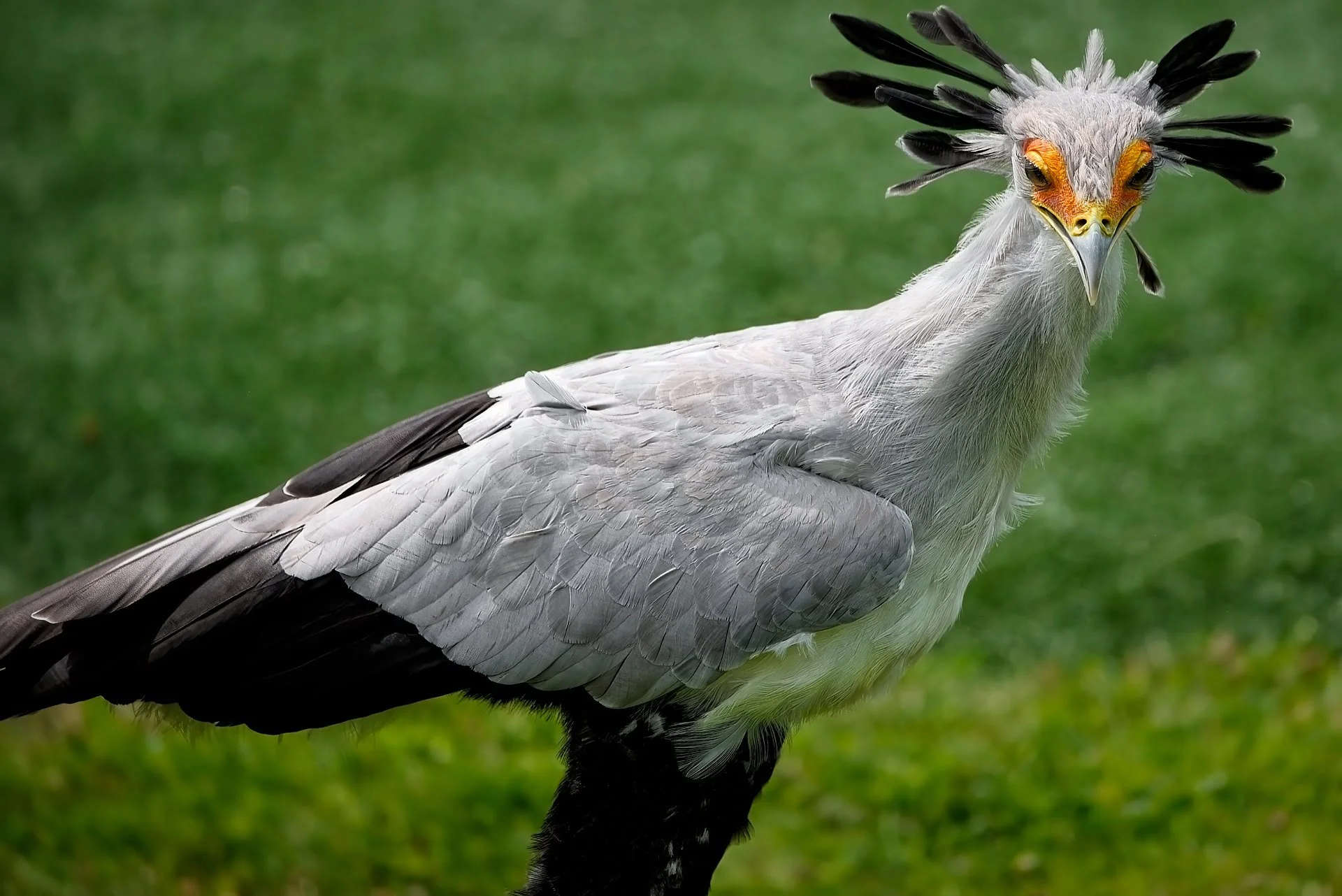
Secretary Bird
Coming from open savannas and grasslands they have long legs, feathered crest and eagle-like head with sharp beak. It is one of the only birds of prey that hunts primarily on foot. Known for stomping snakes to death, including venomous ones like cobras. Their name is believed to come from early European observers who thought the long feathers behind its head resembled quill pens tucked behind a clerk’s ear.
Ostrich
Residing in arid plains, deserts, and savannas of East and Southern Africa. These birds can go up to 9 feet tall, flightless, strong legs and large eyes. It is the world’s largest bird and the fastest two-legged animal, capable of sprinting over 70 km/h. Ostriches do not bury their heads in the sands. This myth likely comes from their nesting behaviour, where they turn eggs using their beaks close to the ground.

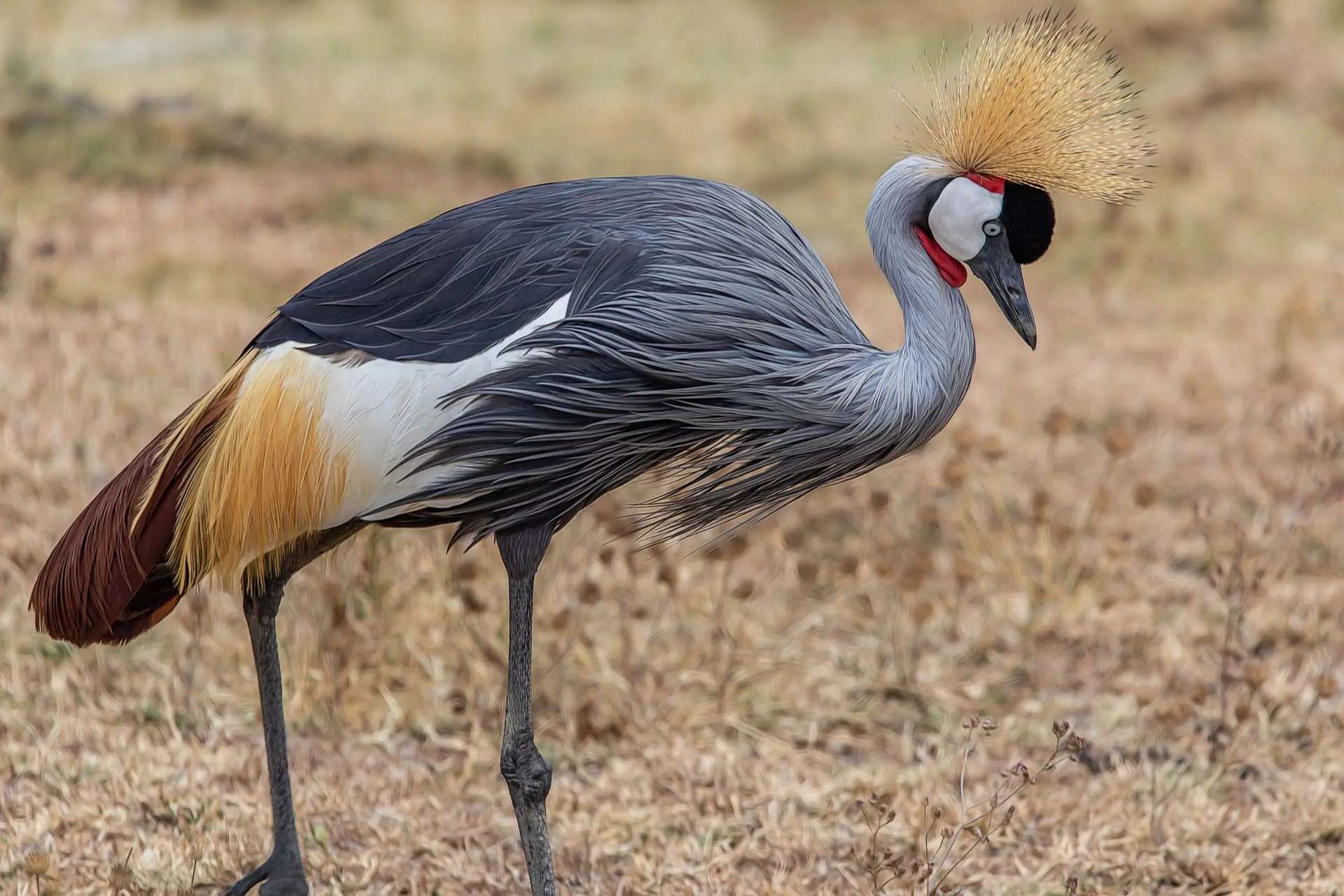
Grey Crowned Cranes
You will find them in the wetlands, grasslands, and cultivated fields in East Africa. These birds have golden crown of feathers, grey body, and red throat pouch. Their courtship displays involve dancing, bowing, and wing-flapping. They are monogamous and considered sacred in many African cultures. As the National Bird of Uganda, they are proudly featured on the country’s flag and coat of arms.
Lilac-Breasted Roller
Open woodland and savannas of East and Southern Africa is where you will find them. They come with bright lilac throat and chest, blue wings and green crown. Known for its acrobatic flight patterns and rich colours, it is one of Africa’s most photographed birds. They often perch on wires or trees to scout insects. Despite its beauty, it is highly territorial and will chase away much larger birds.
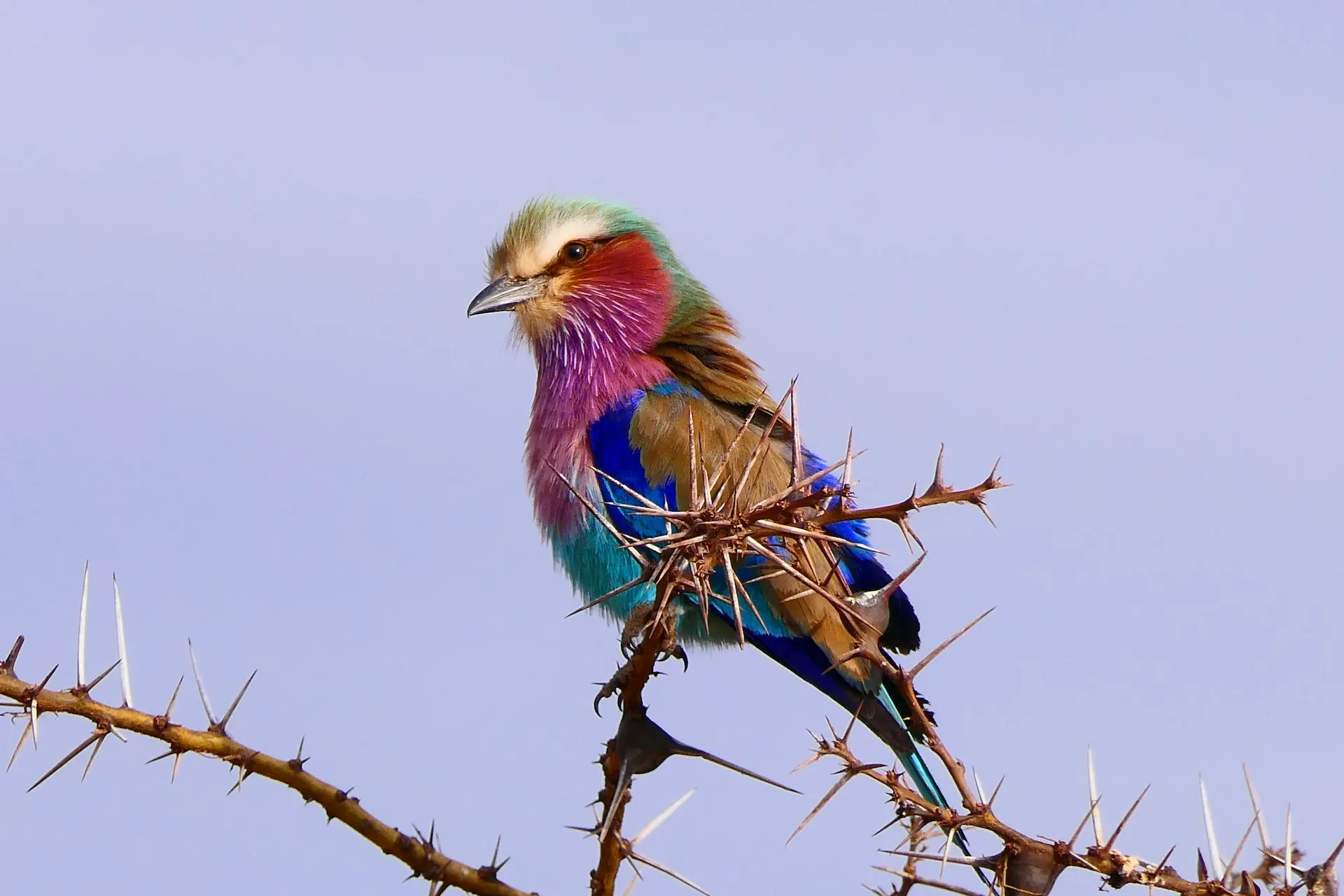
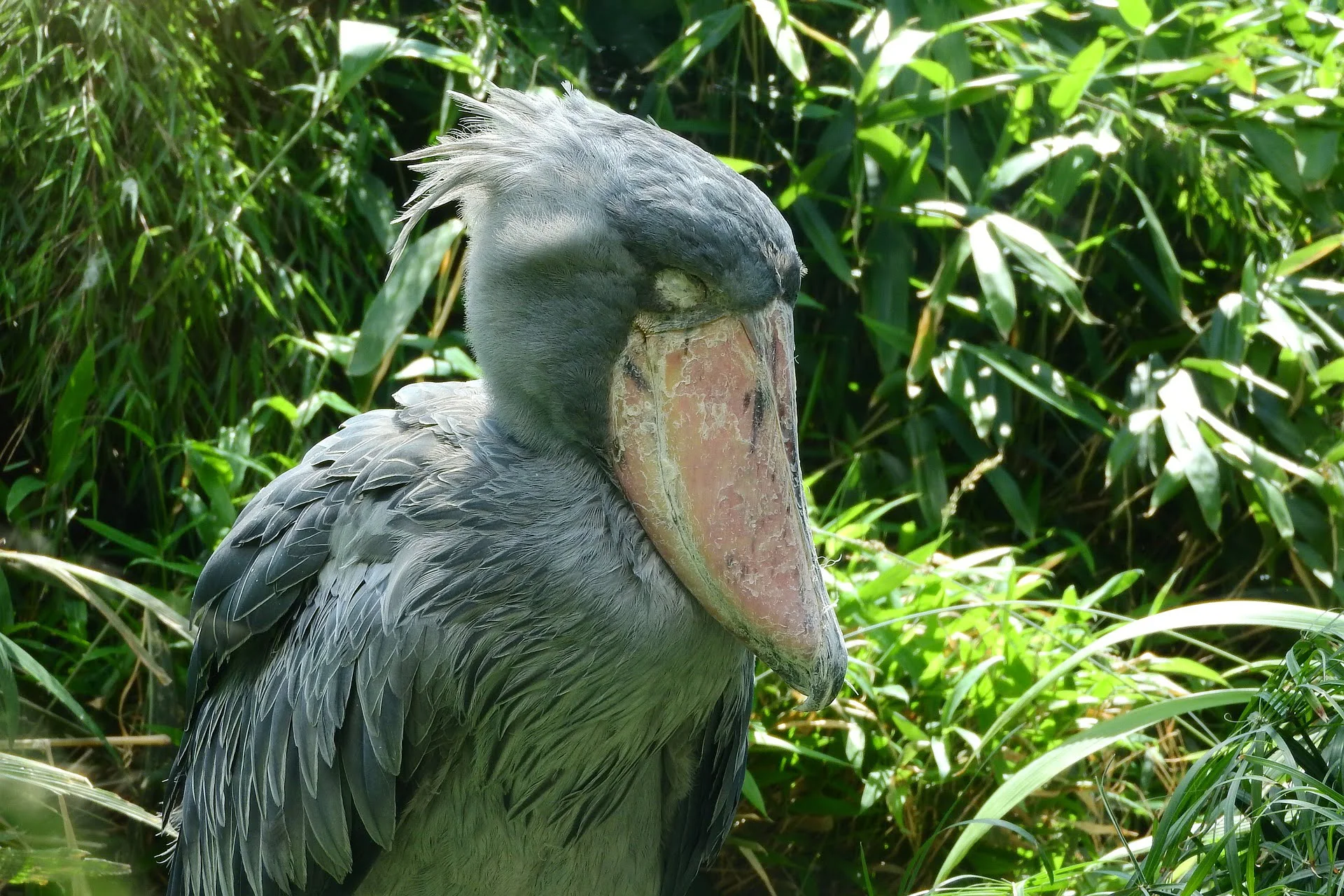
Shoebill
They live in swamps and marshes across Uganda, Zambia, and South Sudan. Their unique trait is the massive shoe-shaped bill, grey body, and piercing yellow eyes. These birds are a solitary, prehistoric-looking bird known for standing still for hours while stalking fish, frogs, and even baby crocodiles. They make a bill-clattering sound, much like a machine gun, during courtship and greeting.
Hornbill
Find them in the forests and savannas across sub-Saharan Africa. They come with large, curved bill often topped with a casque Some hornbills seal themselves inside tree cavities using mud and faces during nesting, with only a small slit for the male to pass food. Ground hornbills walk in groups and communicate with booming calls that can be heard from over 3 km away.
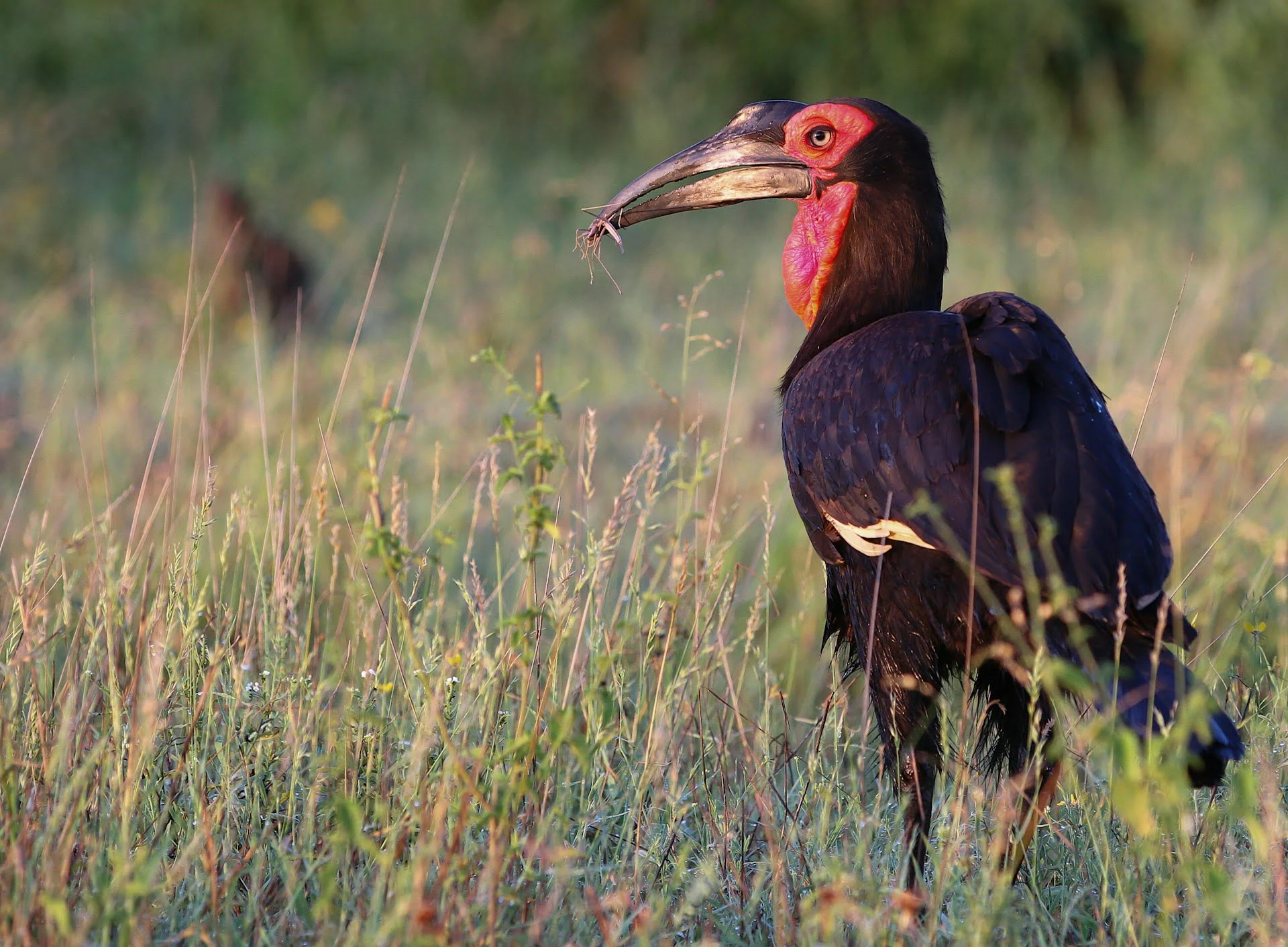
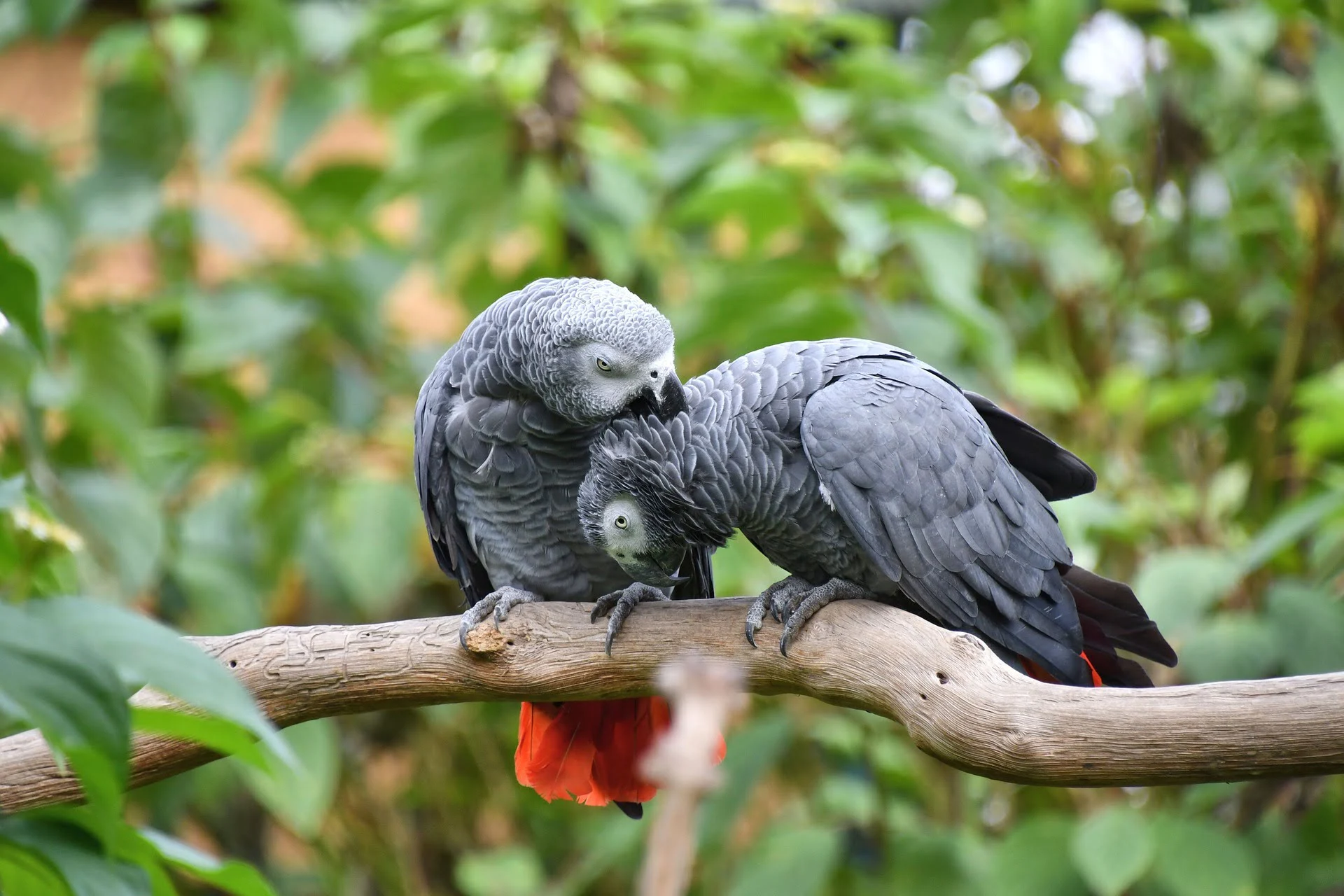
Parrots
Coming from the forests and savannas of West and Central Africa, they have curved beaks and strong feet with exceptional mimicry skills. The African Grey is considered one of the most intelligent bird species, capable of learning words and problem-solving. Wild populations of African Greys are declining due to the pet trade and habitat loss while many are now protected under CITES.
Bee-Eater
Riverbanks, savannas, and woodland edges are where you will find these birds. Bee Eaters have slender bodies with curved beaks and eye-catchy colours. These birds catch bees and wasps’ mid-flight and then rub them against branches to remove stingers before eating. Carmine Bee-eaters often dig nesting tunnels into sandy riverbanks that can be over 1 meter deep
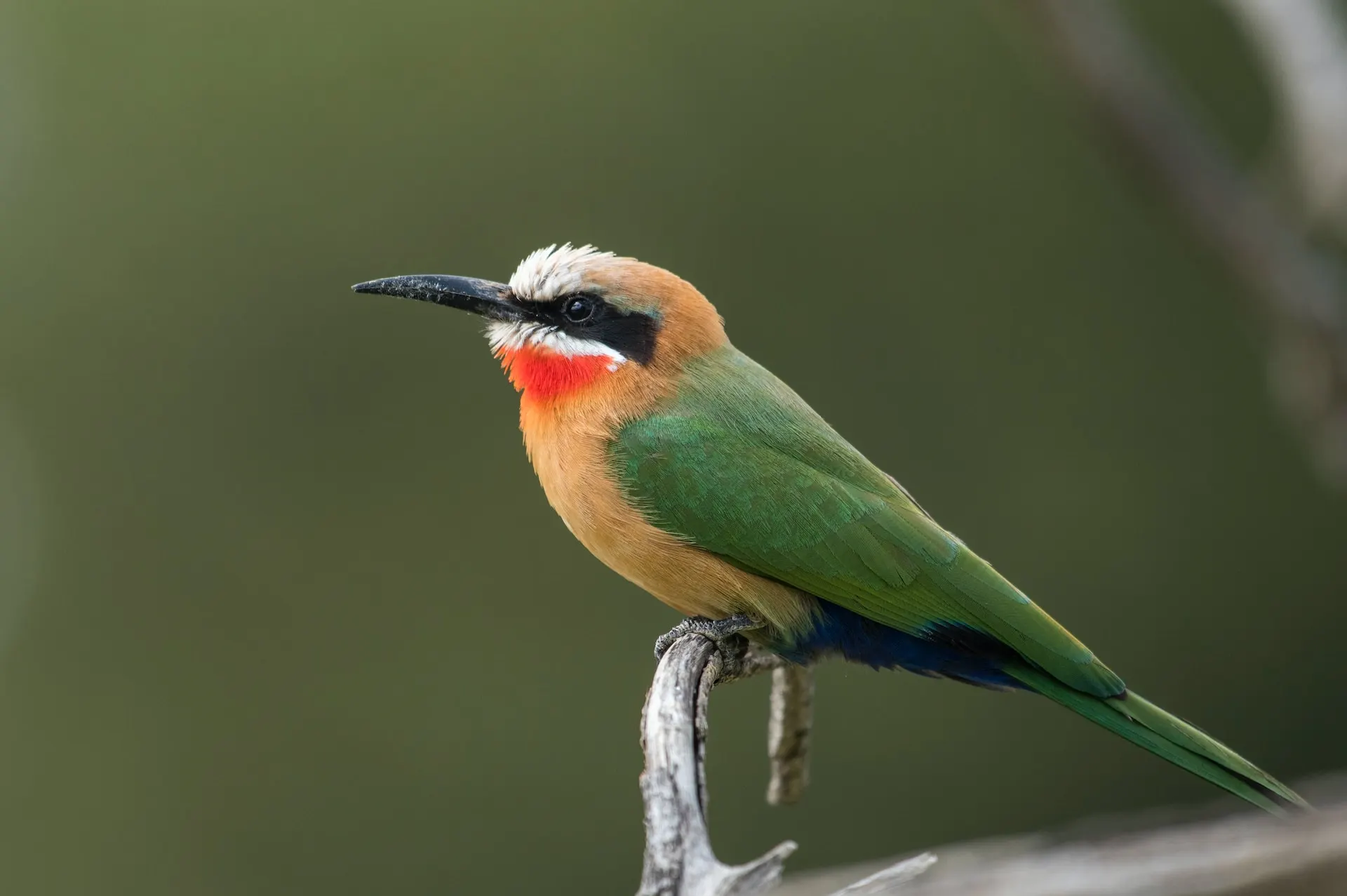
Birding Tips for Your African Safari
Plan Your Trip by Season: Best birding happens during dry seasons or during migrations. Some regions are more rewarding during the wet season when birds breed and are most vocal.
Choose Your Destination Wisely: Kenya and Tanzania are excellent for mixed safaris that is wildlife with birding. Whereas, Uganda and Rwanda are perfect for rainforest birds and shoebill sightings. Also, head for South Africa, Botswana, and Namibia that are ideal for beginners and seasoned birders alike.
Pack the Right Gear: Binoculars, field guidebook, weatherproof notebook, DSLR or mirrorless camera, and a wide-brimmed hat are what you need to pack right away.
Go with a Local Guide: Guides help you spot hidden species and interpret behaviours. They are especially helpful in dense forests or wetlands.
Stay Patient and Silent: Movement and noise scare birds away. Stay calm and observant, and you will be rewarded.
Get ready for an adventure into the vibrant world of birding in Africa! The feathered wonders of this continent are eagerly awaiting your arrival.


